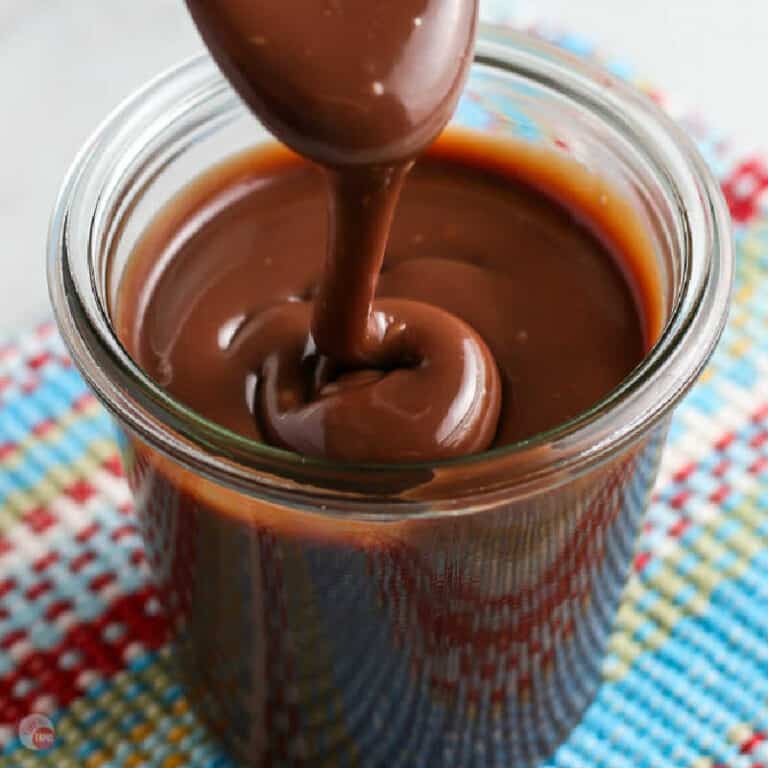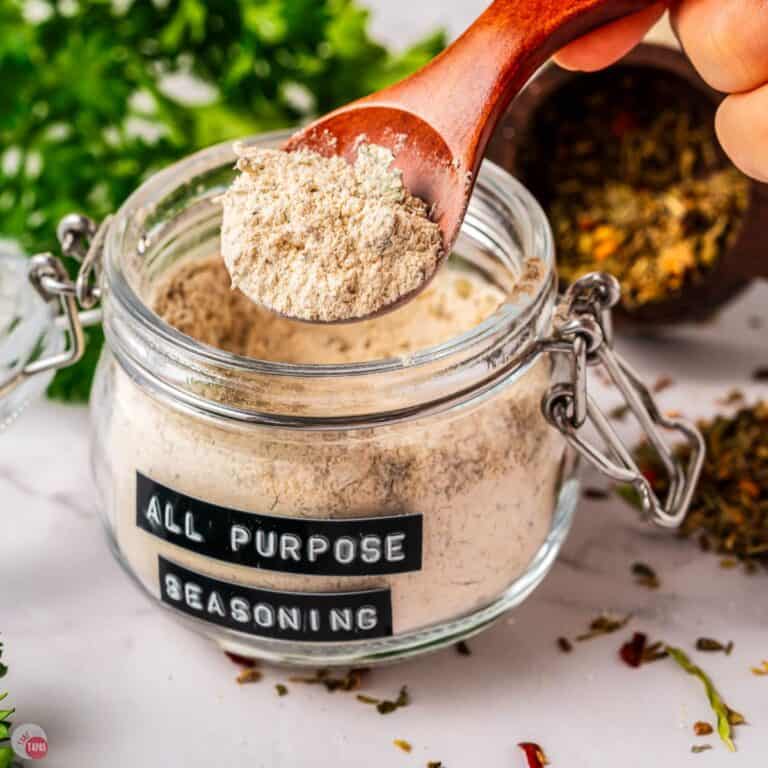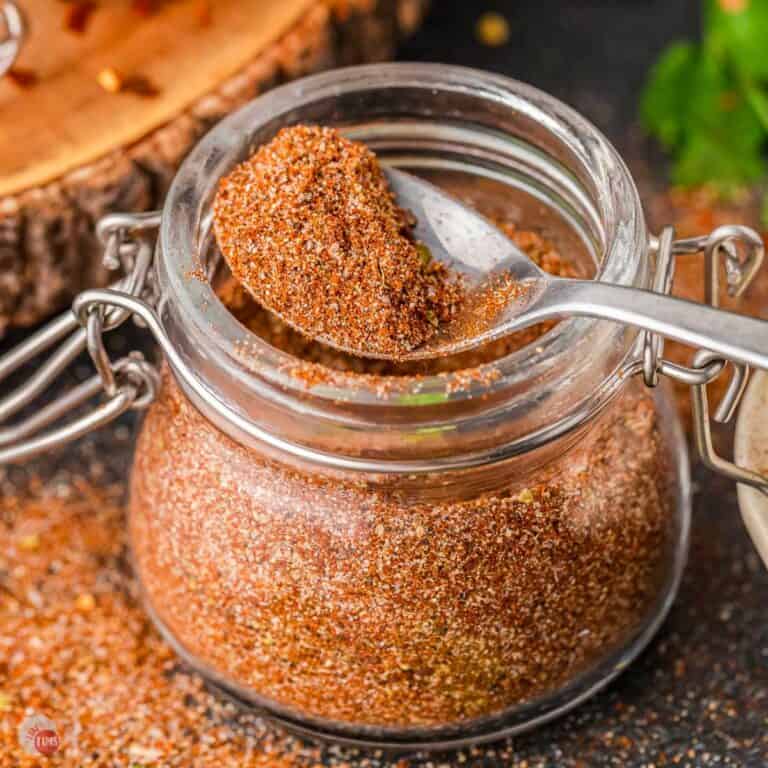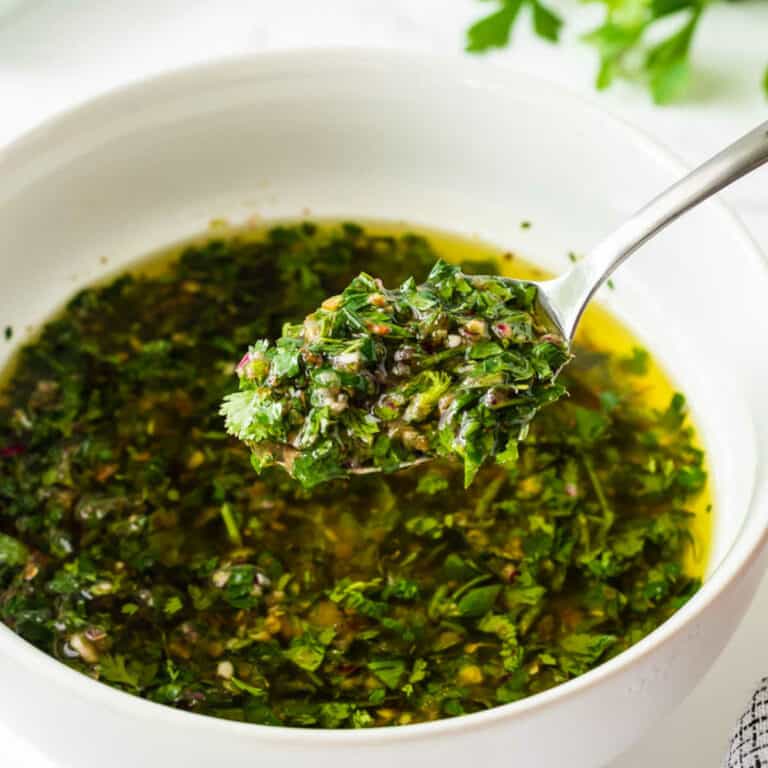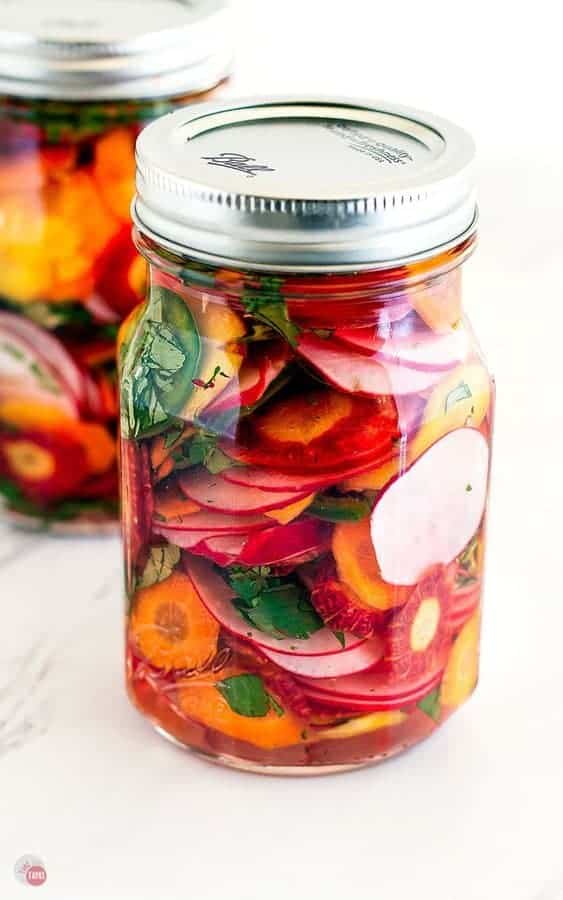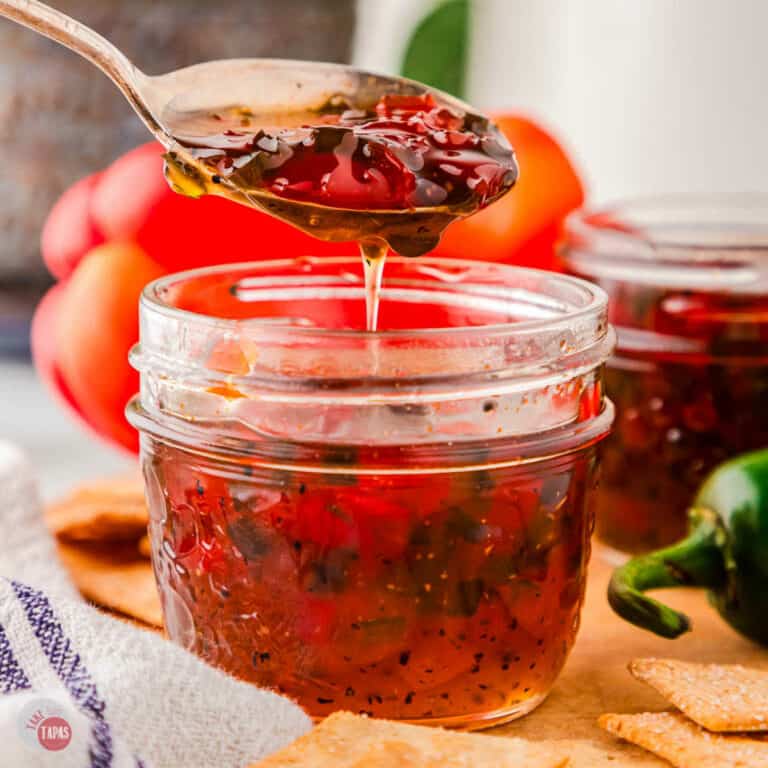Homemade Italian Dressing
Homemade Italian dressing is one of those recipes that takes literally minutes to make but tastes infinitely better than anything you can buy in a bottle! This bright, zesty dressing uses simple pantry staples and has tons of uses.
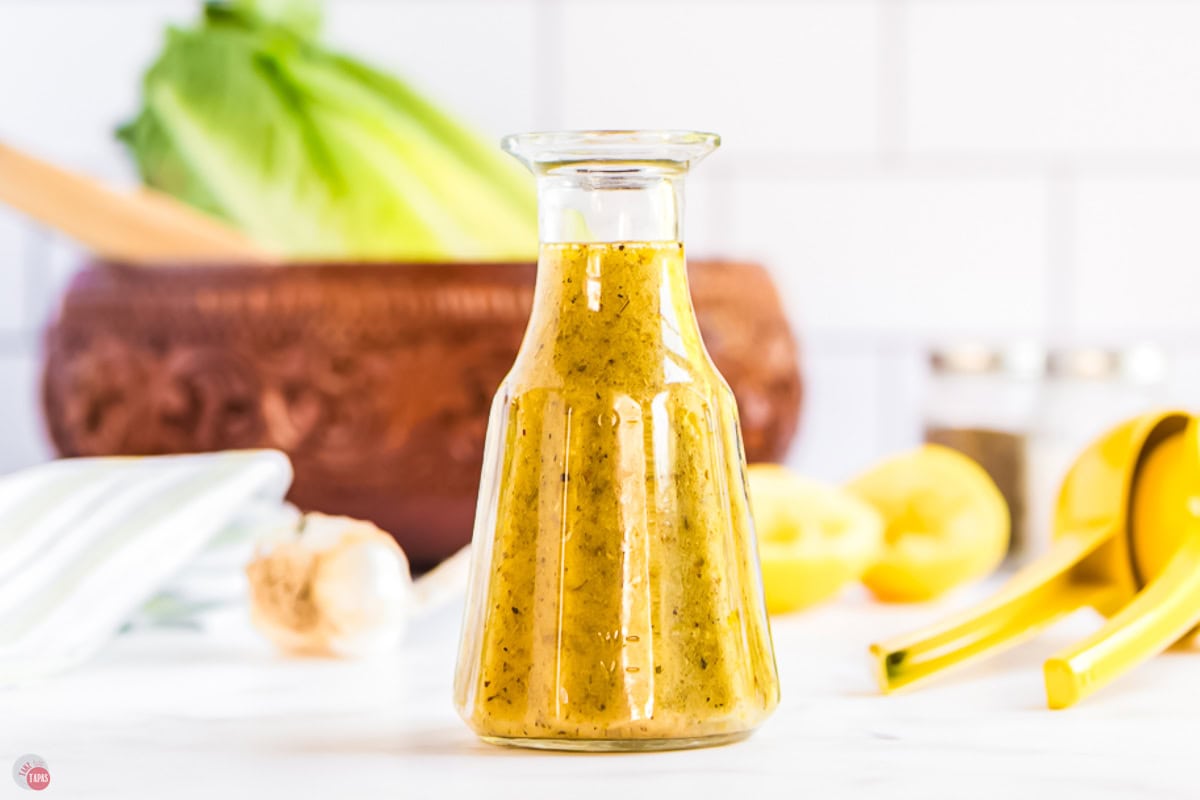
Once you see how ridiculously easy this is to make, you’ll wonder why you ever bought the bottled Italian salad dressings. Plus, when you make it yourself, you know exactly what’s going into it. No weird preservatives or ingredients you can’t pronounce!
The best part? This versatile dressing does double duty as a delicious marinade for chicken, pork, or beef. Think grilled chicken for your next Caesar salad or marinated pork for some amazing pork sliders.
You can drizzle this dressing over some simple greens, but it really shines on heartier salads like my Italian chopped Salad, tortellini pasta salad, or any bean salad. It’s also fantastic as a dipping oil for warm crusty bread when you’re serving antipasto or bruschetta.
It’s also a great marinade. It adds so much flavor to grilled chicken, pork chops, or even lamb for kebabs. This little jar of goodness will keep in your fridge for weeks, ready to add some extra flavor to whatever you’re making!
If you’re loving homemade dressings, definitely try my Greek vinaigrette too. Another pantry staple that’ll change your salad game forever.
This post may contain affiliate links. As an Amazon Associate, I earn from qualifying purchases at no additional cost to you. Read my disclosure policy.
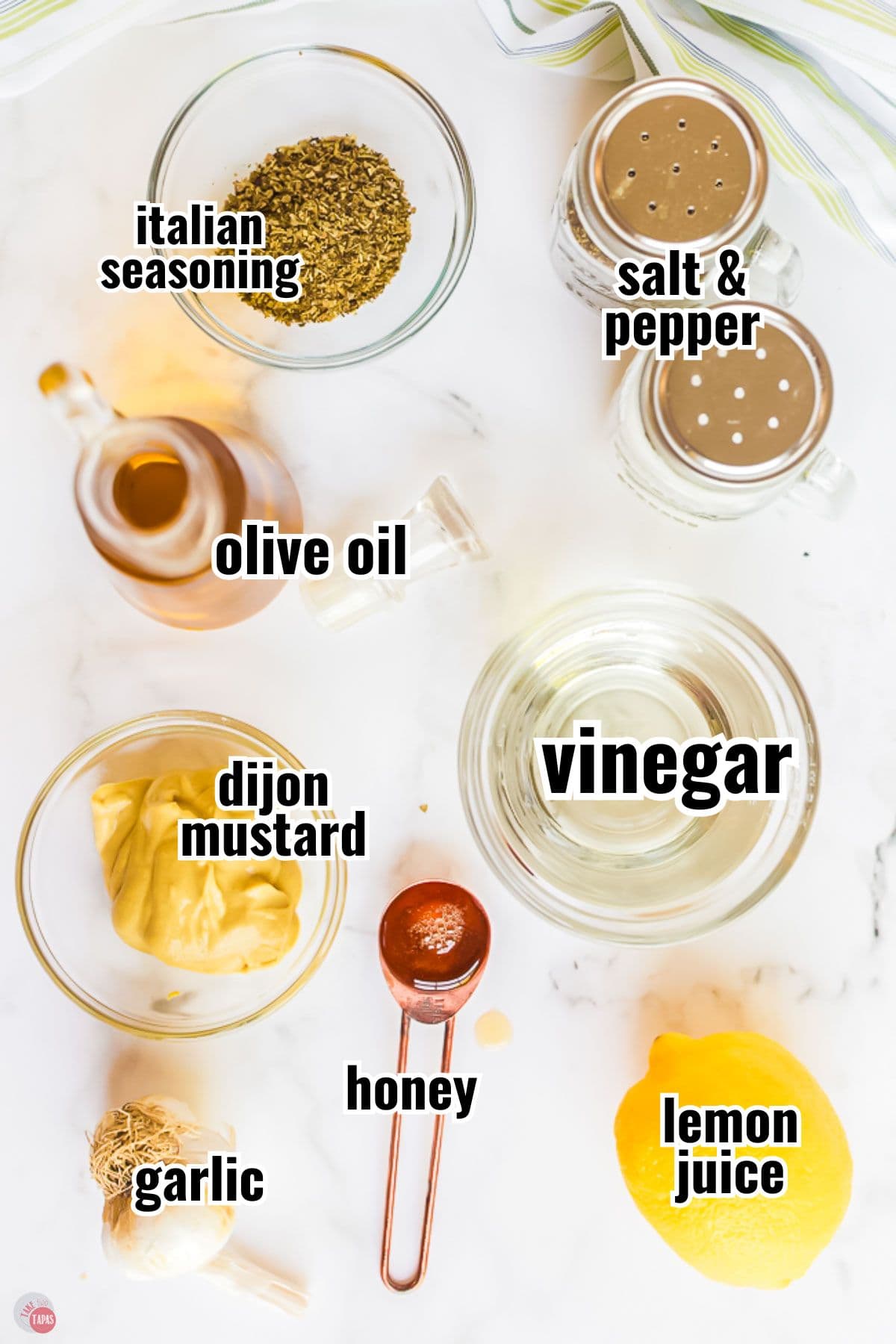
See recipe card for complete information on ingredients and their quantities.
Ingredient Notes
- Olive oil – Use extra virgin olive oil for best flavor. It is lighter and perfect for dressings.
- Vinegar – I used regular white vinegar but you can use red wine vinegar. Or sub your preferred vinegar!
- Mustard – Dijon mustard is my favorite because it has a more subtle flavor. Substitute yellow or whole grain.
- Spices – I like to use homemade Italian seasoning but you can use a combination of oregano, basil, and parsley.
- Honey – You can also substitute maple syrup or agave.
- Lemon – I prefer to use fresh lemon juice because the flavor is brighter.
For more insider tips, tricks, and a behind the scenes look, follow me on Pinterest, Facebook, Instagram, & X.
How To Make Homemade Italian Dressing
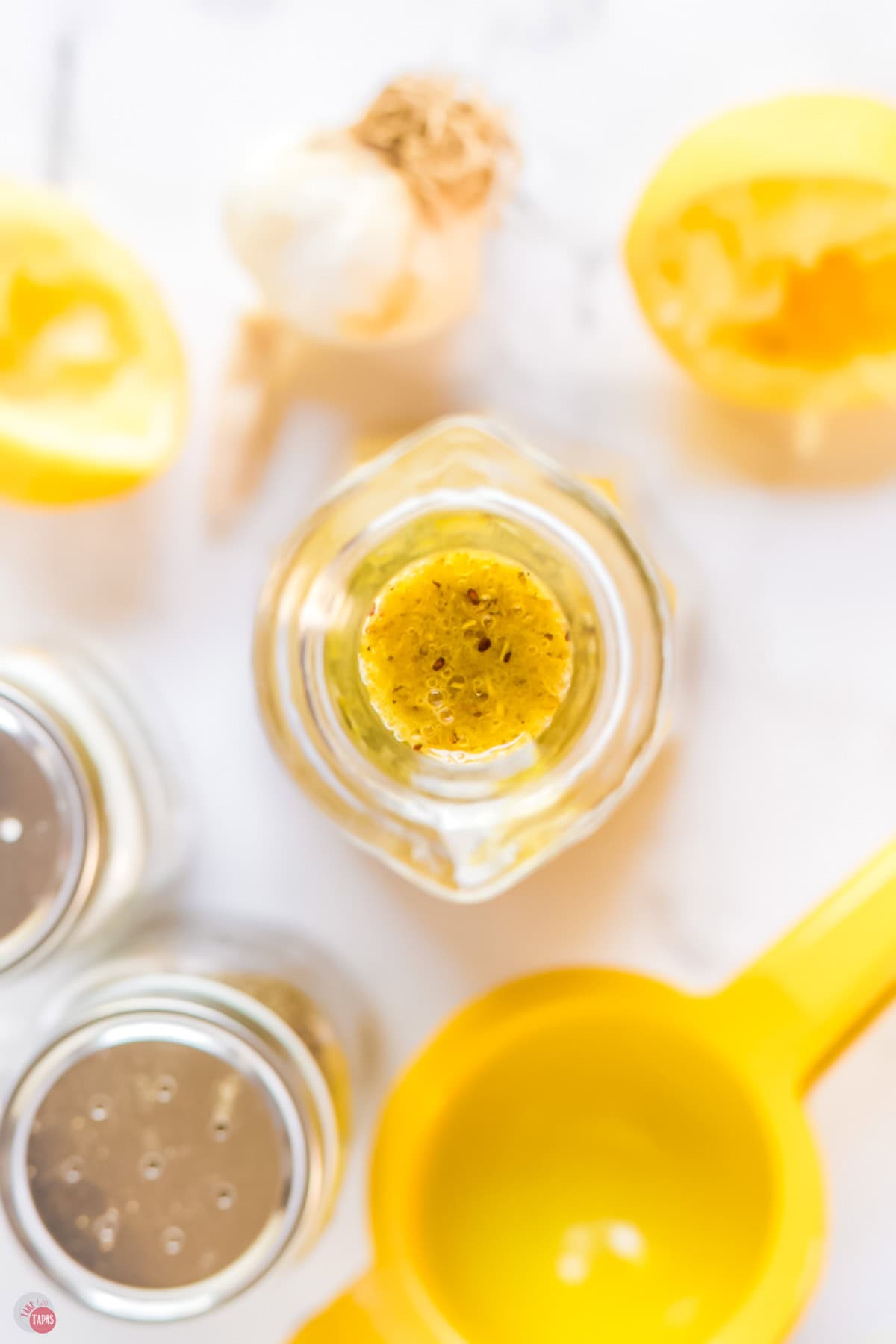
- Combine minced garlic, mustard, seasonings, vinegar, and honey in a bowl or dressing container. Whisk or shake to combine.
- Add the olive oil to the mixture. Shake in a mason jar with a tight lid or whisk to combine. Taste and season with salt and pepper if desired. Enjoy!
For the full recipe and detailed instructions, please refer to the recipe card at the bottom of the post.
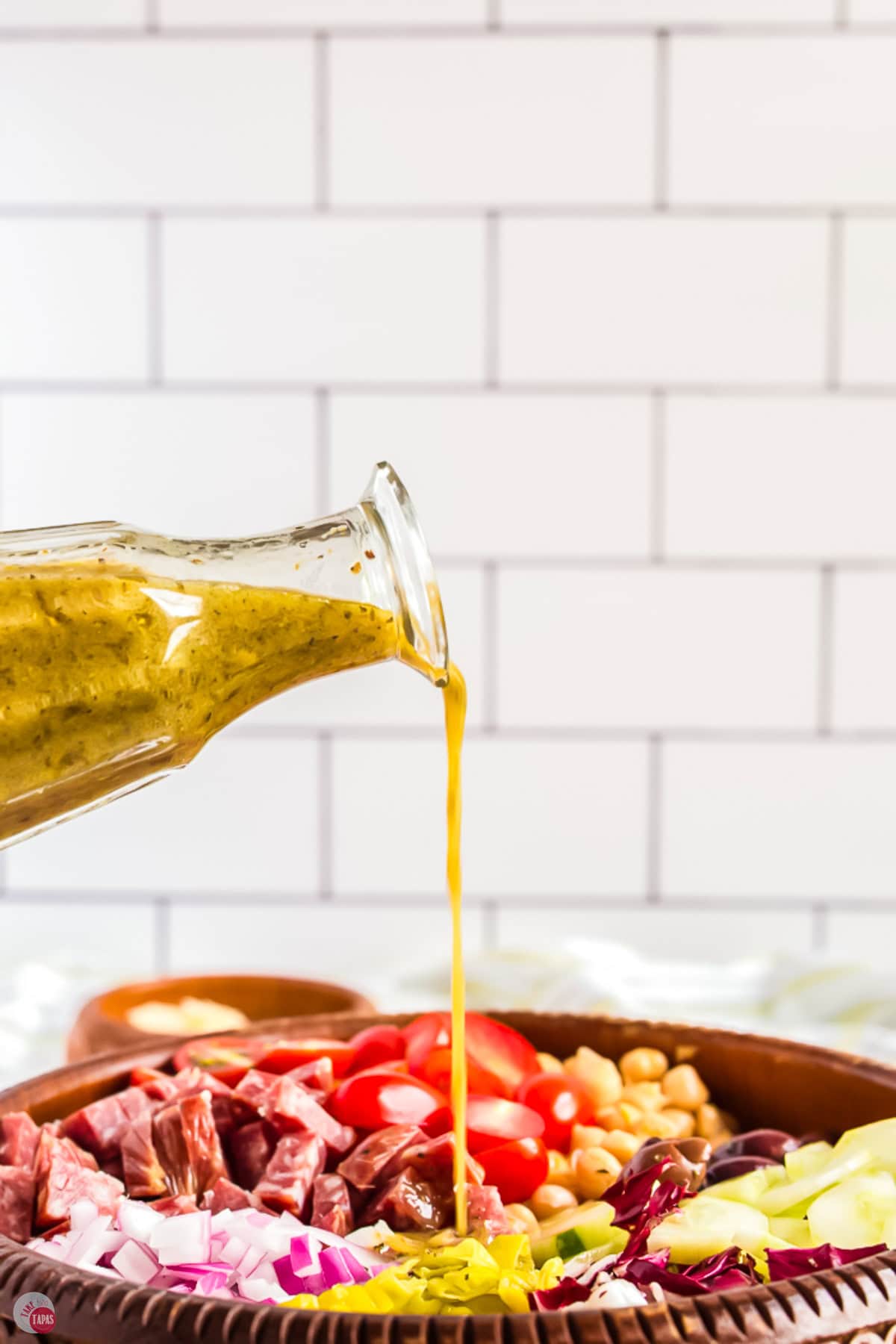
Storage
Since half the ingredients act as natural preservatives, you will be amazed how long it keeps in the fridge. Store any leftover dressing in the fridge, in an airtight container, for up to 2 weeks!
The olive oil might solidify in the fridge. If that happens, just let it sit out on the counter for a few minutes and then shake it really well to mix again.
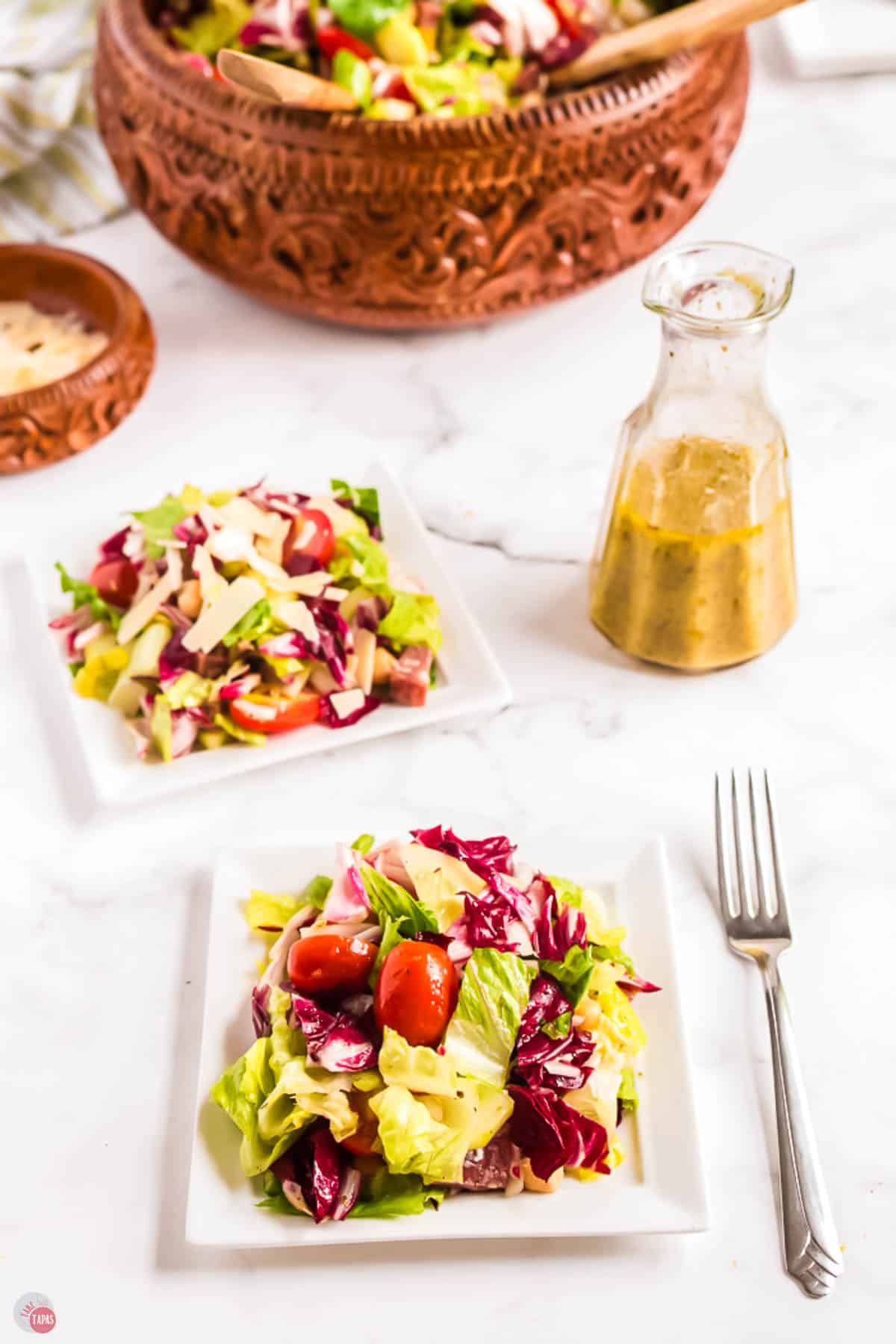
Uses for Italian Dressing
- Salad dressing
- Marinade
- Pasta salads
- Dipping oil for bread
- Brush on roasted vegetables
Frequently Asked Questions
A vinaigrette is a dressing made from olive oil and vinegar and can have a bunch of different variations. Italian dressing is one version or flavor of a vinaigrette dressing.
The best oil for Italian dressing is definitely extra virgin olive oil. Because it’s a big part of the recipes, make sure it’s the good stuff. Lots of olive oils are not actually 100% olive oil, they are mix of oils. So it is important to look at the ingredients and check. Most importantly, you want it to be extra virgin olive oil. Extra virgin olive oil retains the most flavor and the highest level of healthy fatty acids. So it is the best type of olive oil for Italian dressing by far.
Different vinegars can change the flavor so this is where you can get more creative. For a lighter dressing I like to use white wine vinegar. If I am serving a hearty salad with strong flavors like blue cheese, I prefer a red wine or balsamic vinegar. I like to use this recipe for a bunch of other dishes so I use a white wine vinegar to keep it simple.
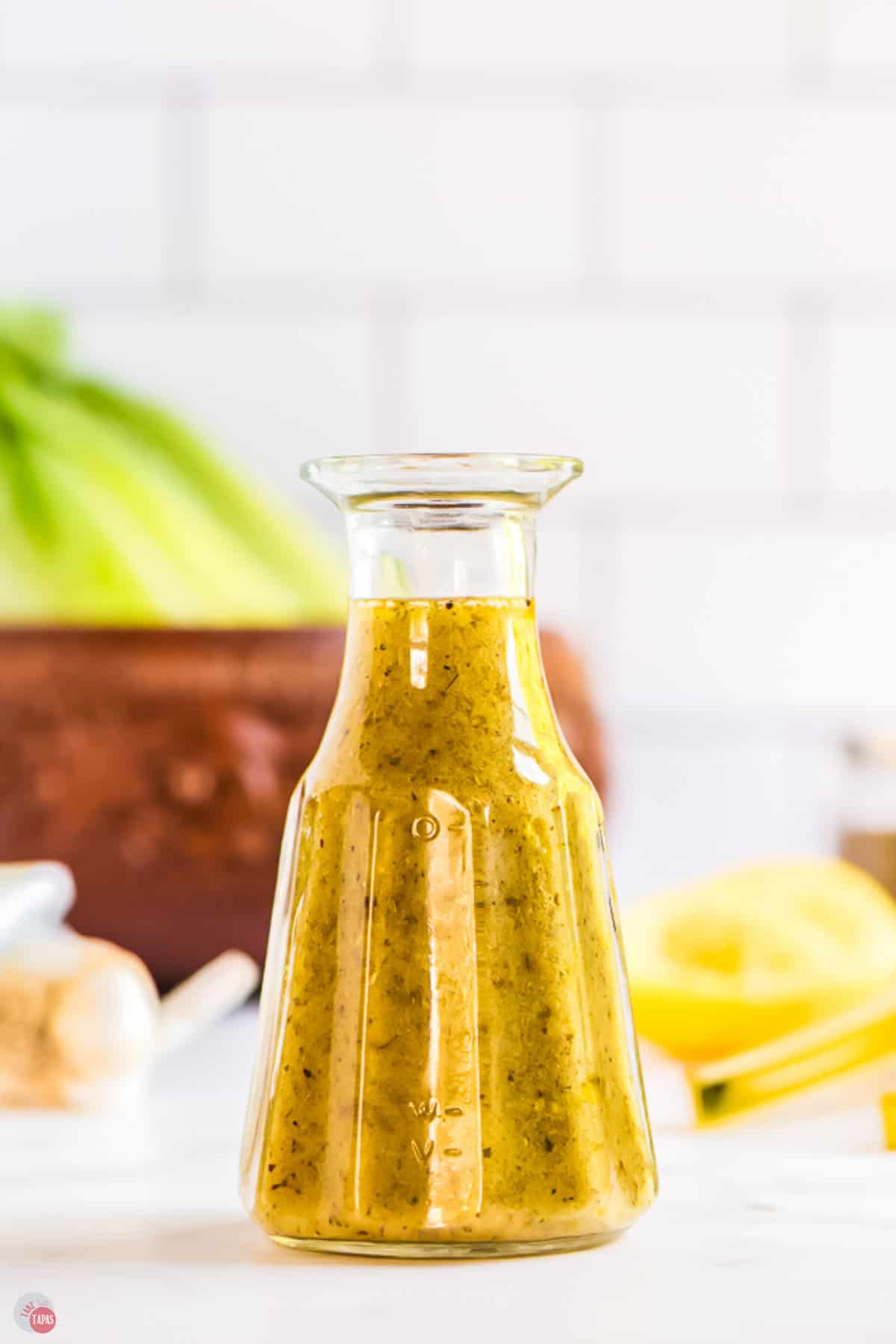
Recipe Tips & Tricks
- Use quality ingredients – extra virgin olive oil and any vinegar (white, red wine, white wine, or balsamic) for best flavor.
- Boost the flavor with freshly grated Parmesan cheese and your own Italian seasoning mix, plus red pepper flakes for an extra kick.
- Fresh vs. dried herbs – double the amount if using fresh herbs since they’re less potent than dried.
- Mix smart – combine herbs and spices with vinegar first, then add olive oil last to prevent herbs from clumping in the oil.
- Let it age – flavors intensify over time, so make it ahead when possible.
- Storage made easy – keeps for weeks in the fridge in a airtight container. Just shake if it separates.
- Dress lightly – start with less and serve extra on the side so everyone can add the amount they want.
If you love this recipe as much as I do, please leave us a ⭐️⭐️⭐️⭐️⭐️ five-star review in the comment section below. Thanks!
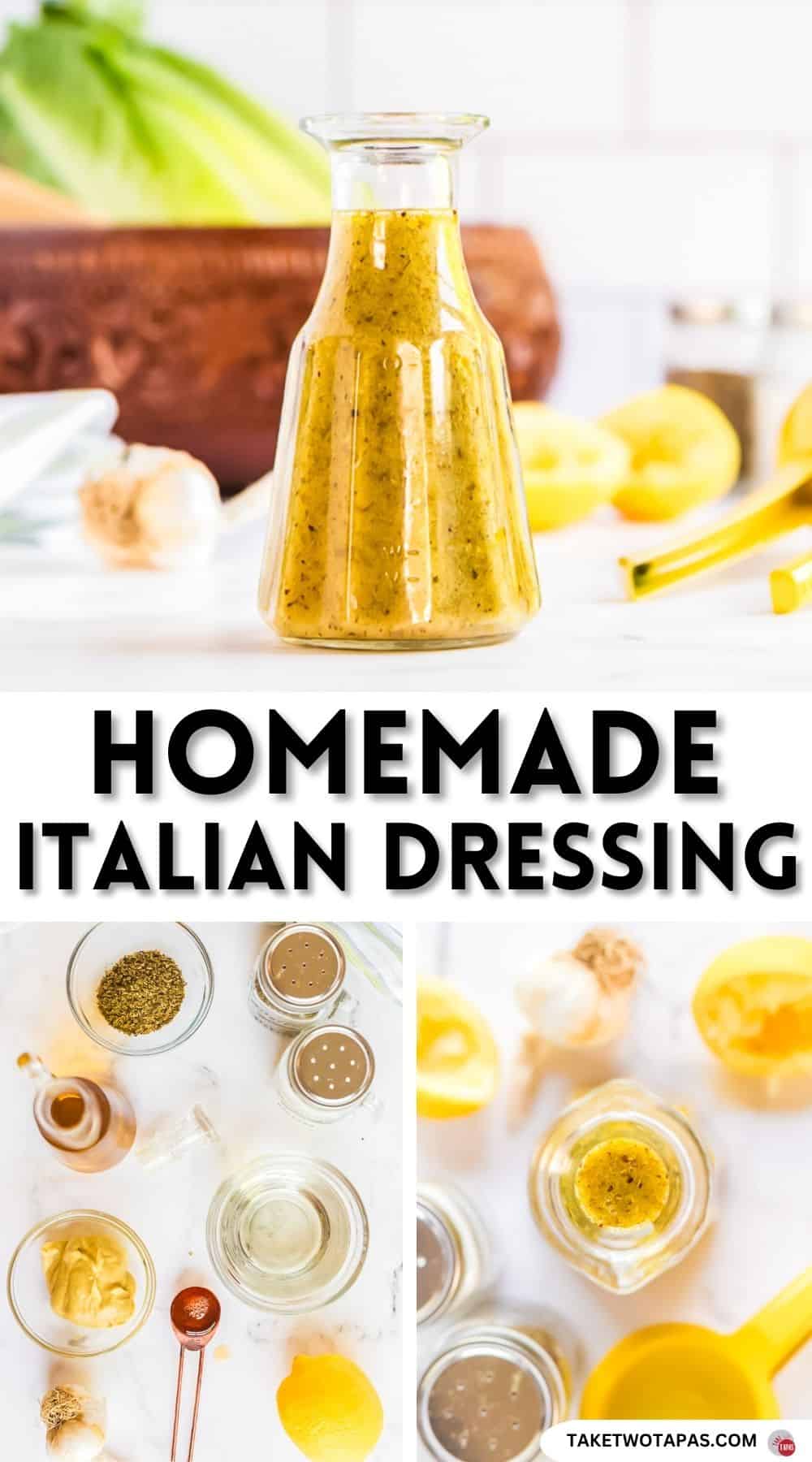
This homemade Italian dressing recipe is easy to make takes way better than any store bought dressings you might have in your fridge.
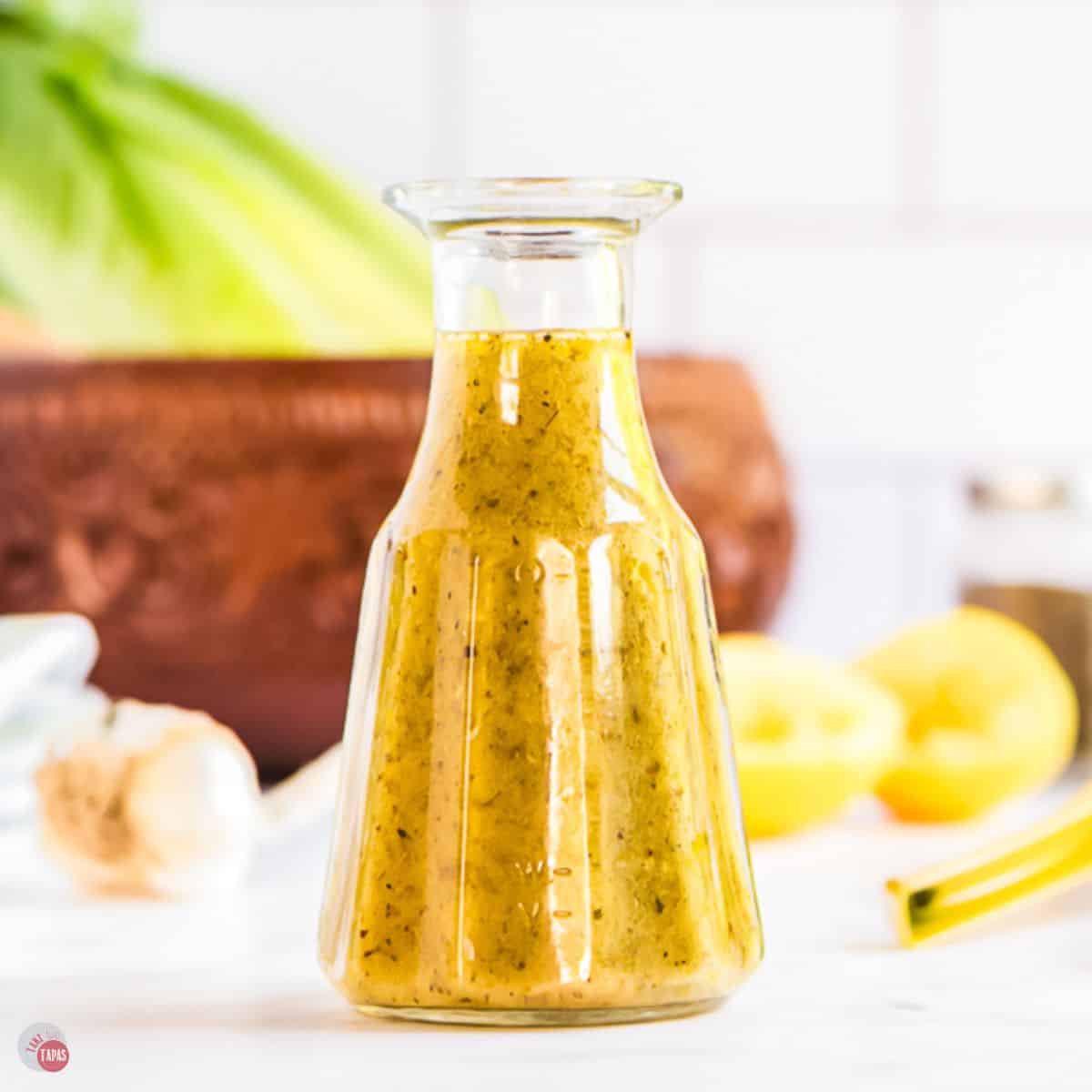
Homemade Italian Dressing
Ingredients
- 2 cloves garlic or 1 teaspoon minced
- 2 tablespoons Dijon mustard
- 3 tablespoons red wine vinegar
- 2 tablespoons freshly squeezed lemon juice
- 1 teaspoon honey
- 1 teaspoon Italian seasoning
- 1/3 cup olive oil
- salt and pepper
Instructions
- Combine minced garlic, mustard, seasonings, vinegar, and honey in a bowl or dressing container. Whisk or shake to combine.
- Add the olive oil to the mixture. Shake or whisk to combine.
- Taste and season with salt and pepper if desired. Enjoy!
Notes
- Use quality ingredients – extra virgin olive oil and any vinegar (white, red wine, white wine, or balsamic) for best flavor.
- Boost the flavor with freshly grated Parmesan cheese and your own Italian seasoning mix, plus red pepper flakes for an extra kick.
- Fresh vs. dried herbs – double the amount if using fresh herbs since they’re less potent than dried.
- Mix smart – combine herbs and spices with vinegar first, then add olive oil last to prevent herbs from clumping in the oil.
- Let it age – flavors intensify over time, so make it ahead when possible.
- Storage made easy – keeps for weeks in the fridge in a airtight container. Just shake if it separates.
- Dress lightly – start with less and serve extra on the side so everyone can add the amount they want.
Nutrition
©TakeTwoTapas.com. Content and photographs are copyright protected. Sharing of this recipe is both encouraged and appreciated. Copying and/or pasting full recipes to any social media is strictly prohibited.

